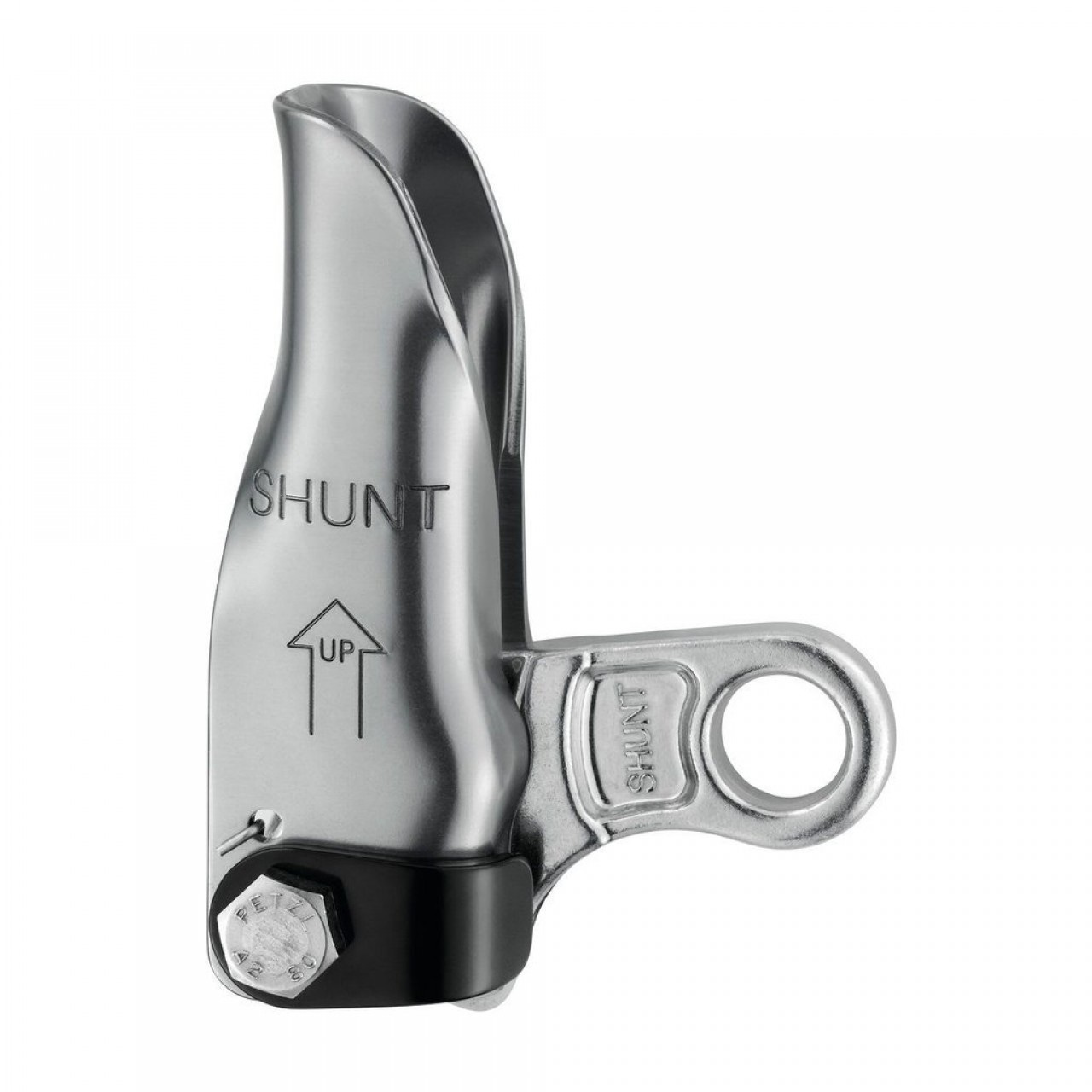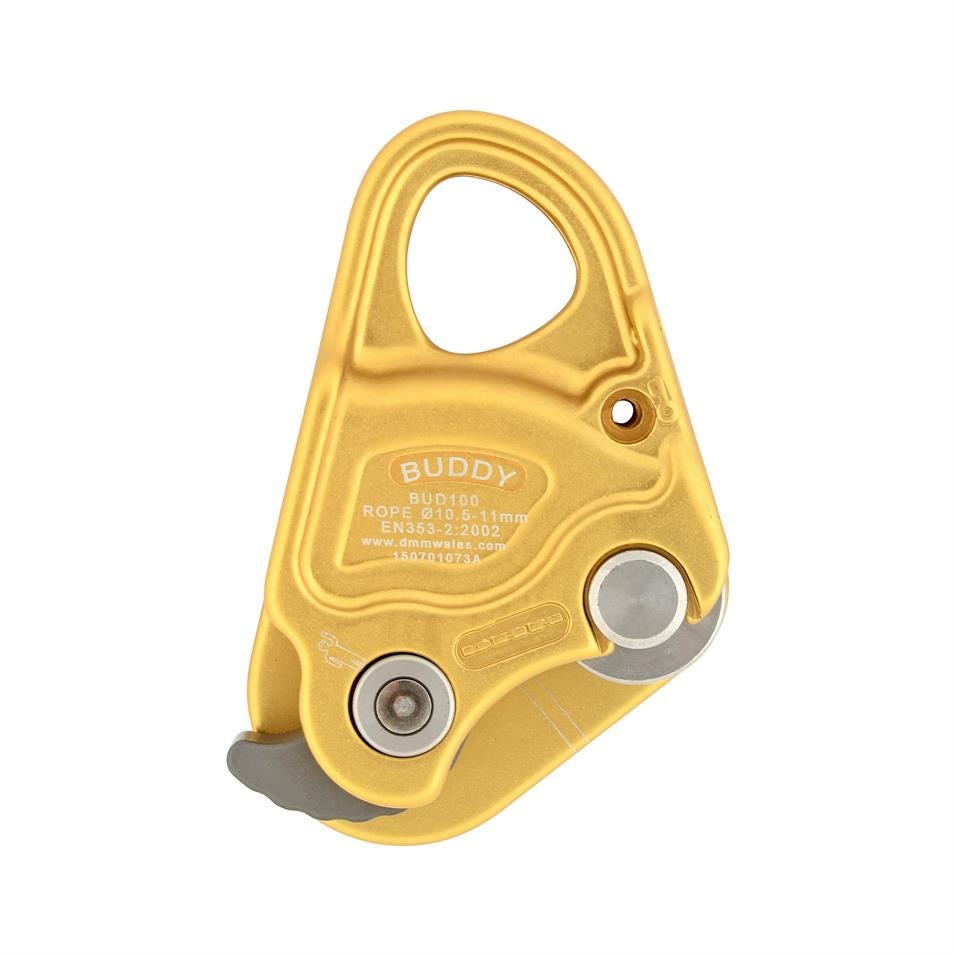Question: looking for some advice for Top rope soloing. There's a lot of forum faff and yergunnadie. I'm looking to TR solo some single pitch ice climbs
1. Is it okay to use a thick single dynamic rope for TR solo? People say static so there's no elongation, others say slipping near the anchor while topping out can make too much force so dynamic is better. Others recommend a semi static top rope specific rope but I'd rather not have to buy a new rope
2. Is it okay to use a toothed device? I see a lot of people say they've been doing it for years with no damage and that toothed devices are fine for top-rope falls. Im thinking of something like the petzl croll held up with a chest harness and a petzl basic or microtraxion below.
3. To escape the system and lower, the only surefire way I can think of is to have another ascender or friction hitch to unweight the top ascender and replace it with a Grigri.
3. Cont. Another option would be to have the higher ascender attached to the belay loop with both a short and long sling so that it could be unclipped from the short sling without being unmatched and then moved higher so that the lower ascender can be replaced with a grigri.
4. I've seen Dave McLeod video of TR soloing with only a shunt. Any thoughts on that, especially with a potentially icey rope?
5. Looking into escaping the system, I think I was a little mixed up. I'd weight the top ascender, pull up some slack through the bottom ascender, clip the grigri in, and then remove the bottom ascender.
Answers
Disclaimer. Unfortunately, we're living in an age in which any advice I give is going to result in me being told off by manufactures and those more qualified and badged to tell you what to do, as well as slandered on forums for attempted murder - so - this is not safety advice (visit Petzl's site for the safety method), but simply how I approach the subject. It's also worth knowing there is no perfect or set or safe way to do this, and even 'the Petzl way' can see your sorry ass being put into the ground if you don't treat it with respect or blindly trust your gear. Trust it, yes, and your system, but treat it as if you're training lions: don't be complacent or get too comfortable, and never turn your back!
So, down to your questions:
1. Can you use a thick dynamic rope? Well, first off, here's a little learning point. What do you think? I suspect you know the answer, and you're right (either way).
There are pros and cons to both ropes, things that will make a dynamic rope both safe and more dangerous - but - and it's a big but - those differences - although taking up thousands of words in a forum argument - are tiny, and in the cold light of day, at the crag, I think they can be ignored.
What cannot be ignored is having a bomb-proof top anchor, the rope protected going over the edge (use an edge protector, plastic tube, carpet, DIY option), and picking the correct route.
My preference on route choice is to avoid overhanging routes, or routes where one can take big swings and smash into the rock (knocking yourself out while alone at a crag is not good - oh - and wearing a helmet is always a good idea).
2. Toothed or not. Again, the answer lies in you, and again, the differences are small, but also significant; if you tried both you'd see what they are. For me, I don't like toothed cams for this, but that's because I tended to top-rope belay on gritstone, and most routes will meander around. This results in the toothed cam locking as soon as you move from the plum line, something that is less of a problem with a Shunt or a device like the DMM Buddy (both are designed as back-up devices and so are more free-flowing, until weighted).
The common worry is that toothed cams will damage your rope, which after jumaring about 50km (if not more!), I can tell you that's not true, it's the rock damages ropes, and bad jumaring skills, and if they do, you're doing something very dangerous (like taking factor 2 falls into one!).
For me, the use of a chest harness changes it from rock climbing to ascending, as does the use of multiple ascenders (primary and back-up), but that's just me.
Personally, I'd avoid the Micro Traxion unless you're using two, as I think it's too easy for the cam to be inadvertently locked back (I've experienced the cam being pulled back when my leg loop tap got caught on a tooth, which then locked it open!). I would also avoid pushing anything above me, such as an ascender on a sling, as one is going to end up dynamically loading both the ascender and the sling (that's not good).
3. To escape the system: I attach my descender below the ascender and then tie it off (I don't just hold it), not forgetting a back-up prusik, then place a long prusik loop above the ascender, step in this, remove the ascender, sit back onto the descender (I might want to pull some rope through it so it's closer to the prusik), remove the prusik, and then I'm free to go once I've released the descender. One should never self line (self-belay on a top rope), without carrying multiple prusik loops and a descender, or two (don't drop it!).
4. Icy ropes are more dangerous on toothed devices as ice can build up on the teeth and cam and make it sluggish or make it stick open (remember that they work via a spring). Non toothed devices like a Shunt or Buddy are safer, but I'd avoid icy ropes if you can.
But with all ropes, icy or not, a back-up knot or two should always be employed, tied into the weighted rope (medium weight), designed to block your device if it fails to lock. Note that such a back-up knot, if dynamically loaded, could well get sheared off by a device, or the device could break, and can also jam if you want to pull the rope up afterwards (rap the line and remove the knots).
5. If you're using an ascender it's probably going to be on your belay loop, and so you can't use to get your weight off it as well, so always employ a prusik around head height.
The missing question: One of the most important aspects you missed in your question is the weakest link in the system, which is how you connect yourself to your ascender. This connector can easily become cross-loaded, become detached if not carefully selected or jam up.
If you're using standard locking karabiner you should make sure it's a modern design that can be locked in position on your belay loop and that the ascender is also locked in place, and cannot migrate around the locker, leading to cross-loading of either the device or the locker.
My go-to connector would be a steel 10 mm rapid link (rap finger tap on the locking nut to make it easier to removed), adding some rubber bands or tape on one side to help keep the device inline (even if it becomes cross-loaded the thing could hold a ship!).
The art of self lining is something each climber needs to feel out for themselves, reading all you can, then taking a deep breath and apply what you've learned while always applying your own instincts. If something seems odd, off, or dangerous, it probably is, and you've probably just misunderstood what someone what you've read or heard. So remember you're taming lions, take everything with a big pinch of salt, even this, and be safe!




I wonder how many people reply regards the taz Lov2 ( lov3 is now just out but no experience with it)
Based on Craig Spauldings write ups on the product I bought one and use it as primary with the Rollnlock as secondary
Have introduced it to others In Ireland
Feels like the best combo out there for the purpose ( slightly expensive being the only drawback)
Just be interested if others reply to your post , on the use of such a device certified for both ascension and descending in TRS
In the Ouray Ice park the CAMP Goblin became pretty popular for use as a top rope soloing device.https://camp-usa.com/safety/product/goblin/
according to CAMP it needs to be used on a semi static rope.